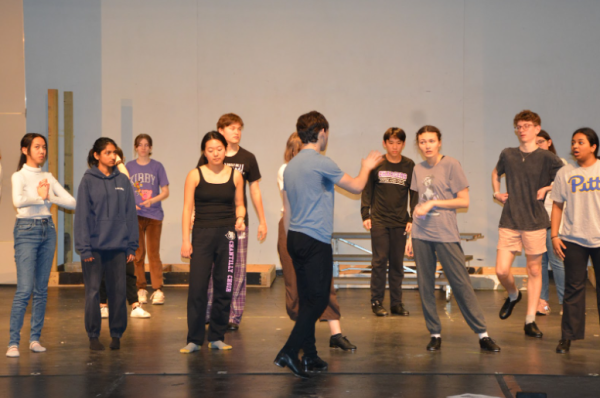A journey to another world: “Melancholia”
March 3, 2017
Note: This article reveals major plot points of the 2011 film “Melancholia”.
“Melancholia” (2011), an aptly titled film, tells the story of an immensely downward spiral from a euphoric occasion. It is a work of lofty aspirations and deep eccentricity, and the sheer ambition shown by its screenwriter and director Lars von Trier can be responsible for making films unrefined and imperfect. If Trier’s film is not a perfect work, it is nevertheless a masterwork – and indeed, one of the high-water marks of 21st century cinema up to this point. It is intelligent in its character arcs and excellently acted. The realism of its characters, and of Trier’s approach to filmmaking, gives the film’s central scenes an unforgettable, disturbing power. Its strongest sequences will be categorized by many as suspense or horror, but they are better labeled as visionary. They are notable for, among other things, how few other directors in cinematic history have more effectively made us feel as though we are ourselves involved in the events unfolding.
The film’s beginning is a lengthy prologue of much formal beauty. While epic in aspect, and set aptly to an expansive classical composition by Richard Wagner, it is enigmatic upon initial viewing in what it – essentially a succession of slowly moving tableaux – depicts. In a lavish location whose whereabouts are unknown, a woman is seen despondently carrying a child in an open field while running. A bride in a wedding gown appears to be falling into waves of water. Because all occurrences in the scene unfold so gradually, and are accompanied by such sweeping music, everything that happens appears highly important. That they remain unknown events in spite of these qualities arouses intrigue in the viewer. They are followed by the first chapter (titled “Justine” after the bride), in the first sequence of which a man and a woman, shot now in an unsteady handheld and often in close-up, are being driven to their wedding. This is a change from a highly cinematic aesthetic to something of documentary-like authenticity. Significantly, however, the film’s obscure prologue, in an instance of intelligent storytelling, causes an undercurrent of trepidation to be established from the start; Trier only then travels back to the story’s chronological beginning and shows the lead characters happy, in a scene which would not have had this undertone without the completely dissimilar introduction.
The wedding is the major event of its first half, and here the filmmaking is strong if also nothing spectacular. It serves principally to involve us in the time and place of the event; filmed in handheld and featuring little use of music, modesty is its hallmark. Trier is nonetheless a skillful builder of dread: for one, the aforementioned sense of foreboding recurs throughout the work, in increasingly overt appearances. Most central, however, is his manipulation of setting. The wedding ends badly and, upon its passing, is to no longer be discussed. By the film’s second part, titled “Claire” after the bride’s sister, “Melancholia” has become a chamber drama – and in its final half-hour the story is marked by indifference to all human affairs in the form of one sister’s actions, and enormous despair in the form of another’s actions. What was once the setting of an elaborate and highly busy social event is a nearly vacant building in the morning after. All merriment of the first hour – and, in fact, any reflection of human society – is now so long behind us and the characters that it may as well have been from a different film entirely. A sea change if ever there was one, this audacious shift throws us wildly off; with it, the groundwork is laid for Trier’s masterful vision of the apocalypse. That the first chapter of “Melancholia” starts in vivacity, and spends much time in it, enhances the dramatic effect of the second half, which in comparison is of startling unearthliness.
The downward progression of the film’s narrative is so sharp that at first it seems nearly comic. Trier’s brilliance lies in his joining of such a storyline – one which would rarely be thought of as realistic – with deep realism in camerawork. This increases the extent to which its events are involving. The use of music from Wagner allows the end of the world, as it is depicted here, to be more than simply unnerving, and to take on much poignancy. This is not a blaring, bombastic score that emphasizes loudness and chaos to a fault; Wagner’s piece is a romantic piece, a slow and melodious one. When put over sequences of apprehension and unexplainable disaster, the result is a tone of deep fatalism and sadness.
When during a hailstorm Claire holds her child close in an open field, for example, the scene elicits pity on the character in her helplessness. The weather itself could nearly be telling her, “The collision you so dreaded is approaching; you must now surrender yourself to what lies ahead and say your final goodbyes, for these things sometimes happen and cannot be stopped by anyone’s efforts.” The prelude to “Tristan and Isolde” is highly fitting. This scenario, if music is to accompany it, demands something at once resounding and graceful – for the characters we have come to know will soon be gone, and the setting once full of people is to soon disappear along with all else in this world.
It ultimately does. “Melancholia,” a visionary work, follows the vastly different reactions of Justine and Claire to the crisis in front of them. In doing so, it is a stimulating set of character studies. Justine, constantly saturnine in the second half and played excellently through the understatement of Kirsten Dunst, detests the wedding’s conclusion, but her subsequent disgust with the human race causes her to calmly accept what for most people would be the most frightening of all things. There is much psychological depth in the displaying of her disposition alongside that of Claire, who is mentally healthy but immensely sad in the last scenes in which she appears. Justine begins happy and dies content; her arc over the film’s two hours may be viewed as a great fortune for her. Because of the film’s character development, visual approach and use of music, it follows that whatever may come to an end in this singular and aberrant motion picture, the massive impression left by the work does not.
The brilliant writing and direction of “Melancholia” place it among the 21st century’s major works of art.
“Melancholia” is available on Netflix.











